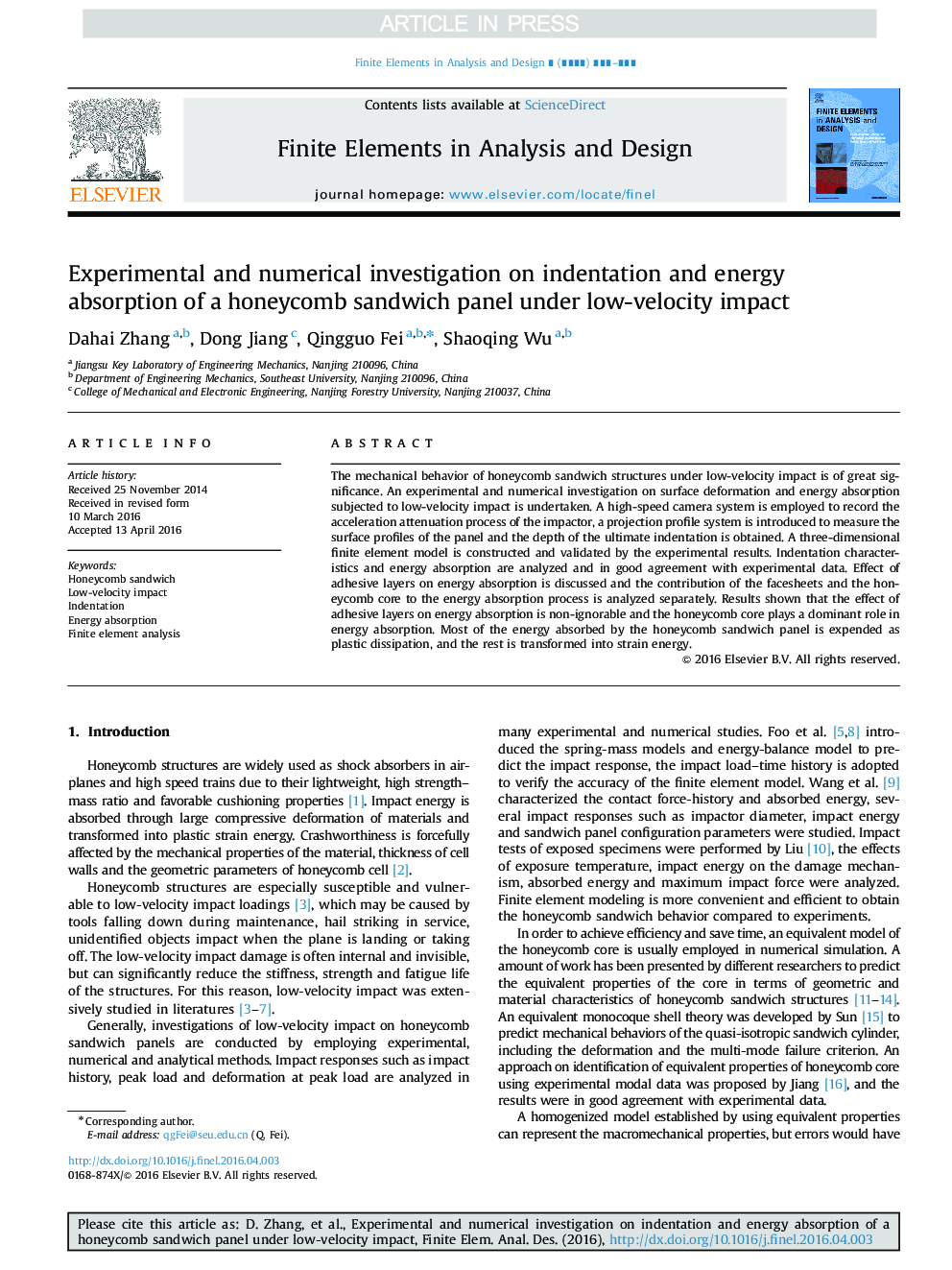| Article ID | Journal | Published Year | Pages | File Type |
|---|---|---|---|---|
| 6925568 | Finite Elements in Analysis and Design | 2016 | 10 Pages |
Abstract
The mechanical behavior of honeycomb sandwich structures under low-velocity impact is of great significance. An experimental and numerical investigation on surface deformation and energy absorption subjected to low-velocity impact is undertaken. A high-speed camera system is employed to record the acceleration attenuation process of the impactor, a projection profile system is introduced to measure the surface profiles of the panel and the depth of the ultimate indentation is obtained. A three-dimensional finite element model is constructed and validated by the experimental results. Indentation characteristics and energy absorption are analyzed and in good agreement with experimental data. Effect of adhesive layers on energy absorption is discussed and the contribution of the facesheets and the honeycomb core to the energy absorption process is analyzed separately. Results shown that the effect of adhesive layers on energy absorption is non-ignorable and the honeycomb core plays a dominant role in energy absorption. Most of the energy absorbed by the honeycomb sandwich panel is expended as plastic dissipation, and the rest is transformed into strain energy.
Related Topics
Physical Sciences and Engineering
Computer Science
Computer Science Applications
Authors
Dahai Zhang, Dong Jiang, Qingguo Fei, Shaoqing Wu,
